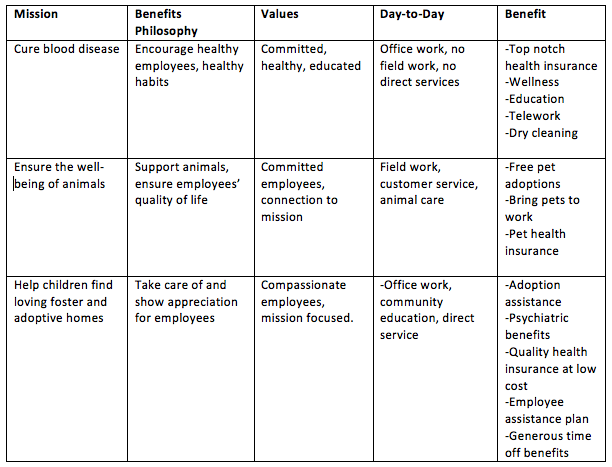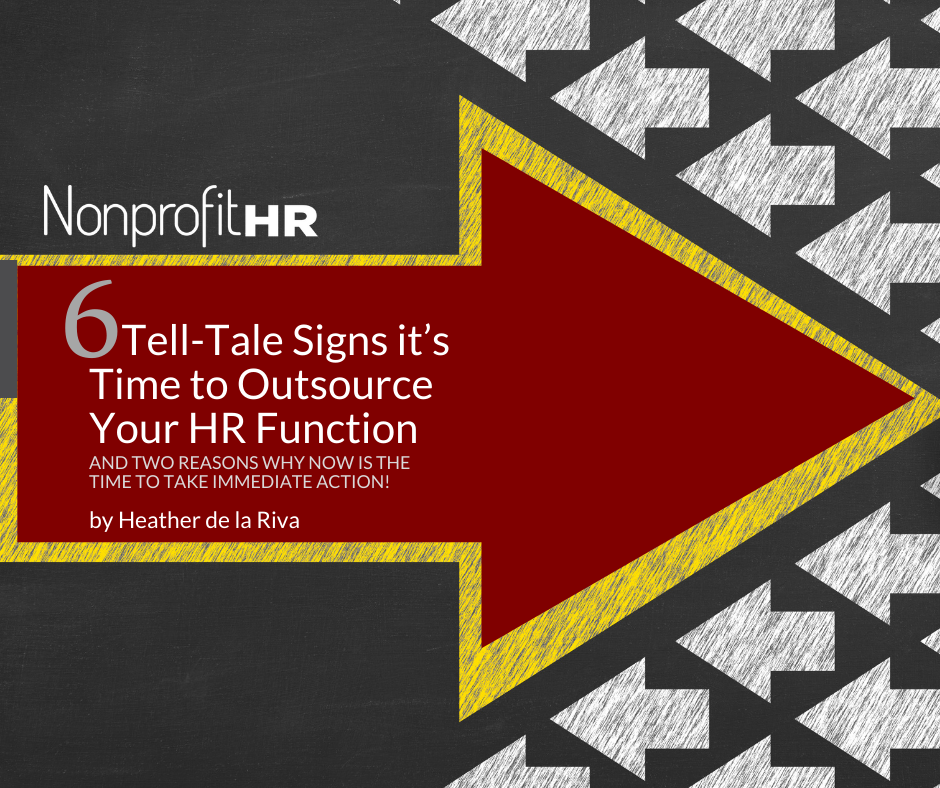WTOP: 5 ways nonprofits can…
Written by Julie Gallion, PHR
Context is extremely important when designing or tailoring a benefits program for your organization. Before I get into how to do it, here are two stories of organizations that went through this process.
-
The Customer is Always Right
Years ago I worked for an environmental nonprofit organization whose mission was to save and protect the world’s oceans and the animals that live within. At the time, the new Director of Finance was trying to convince leadership to incorporate adoption benefits into our benefits package. Our staff was made up of young project managers recently out of school, as well as individuals who were on a personal mission to save the fish and whales. Though the employees were all quite compassionate and supportive of adoption in general, few planned to start families anytime soon and none had expressed interest in adoption. The group was much more interested in traveling to ocean destinations for snorkeling and scuba diving. The Director of Finance lost his battle. Adding adoption benefits in this environment was simply unrealistic. Instead, we brought in on-site scuba lessons discounted for employees offered after-hours.
-
Practice What You Preach
My next job was at a medical association whose mission it was to support medical professionals in their desire to cure disease. The HR team worked hard to incorporate the organization’s mission and values into their benefit package. As an association, the staff was made up of professionals who were interested in meeting coordination, marketing, communications and policy. They were also interested in public health and supporting medical professionals. Given the medical-focus of the mission, the organization valued employees who worked hard to stay healthy. As such, the organization offered top-notch health insurance at very little cost to employees and one of the most comprehensive wellness programs that I have ever seen.
I tell these stories to illustrate that benefits programs are not one-size-fits-all. What would be the point of offering a package that doesn’t attract the type of employees you value? You want to prove your dedication to your mission!
How To Start
The first step in tailoring your benefits to fit your employees is the same as the first step in designing any benefits package: determine your budget. Using a predetermined fringe rate (a percent of total salary to be used for purchase of employee benefits and taxes) is critical to determining what you can, and cannot, afford. Calculating and justifying your fringe rate can also do wonders to help funders understand what exactly they are paying for.[i]
Establish a Baseline
The next step is to consider what basic benefits are available where your employees are located and how much they cost, i.e. health (medical, dental and vision), life insurance, disability insurance benefits.
Develop a Philosophy
Once you have your budget, you must develop a benefits philosophy. As a mission-driven nonprofit, it is important to understand how your benefits demonstrate your dedication to that mission.
Along with aligning benefits with your mission, values and philosophy, it is important to consider what you value in your employees. Think about what you want your employees to take care of and then how you can make that easier for them. For good health – affordable health insurance and wellness rewards. For healthy pets – veterinary care benefits. This includes what you want them to take care of to do their jobs better. For example, a dry cleaning benefit at an office requiring business attire is a nice perk.
Examples
Having trouble connecting your mission with comprehensive benefits? Here are some possible examples of merging mission, philosophy, values and day-to-day work with benefits offerings.
[i] Fringe rates in nonprofit organizations tend to range from 20%to 32% depending on the overall budget size of the organization, the funding sources, the geographic location and the type of organization.






























